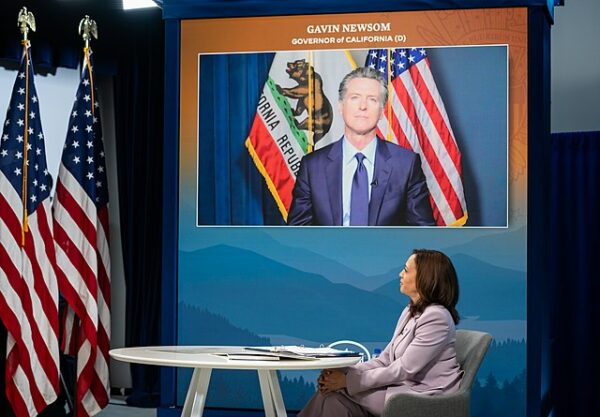
In the heart of Times Square on a warm June night, hundreds of demonstrators unfurled Iranian flags and chanted against war, calling for “No U.S.-Israel War on Iran.” The protest, organized by The People’s Forum—a group reportedly funded by Neville Singham, a businessman with documented ties to the Chinese Communist Party and the leftwing group Code Pink—was as much about foreign policy as it was a microcosm of a deeper pattern within Democratic Party politics: a recurring instinct to side with the minority opinion on issues that divide the country.
The timing was not accidental. With tensions in the Middle East rising and public sentiment shifting toward a more hawkish posture on Iran, the demonstration’s message clashed sharply with prevailing American opinion. Recent polls show a broad majority of voters support stronger measures against Tehran, including military preparedness and diplomatic pressure. And yet, the message on display in Times Square—opposition to American and Israeli action—aligned with a passionate but small segment of the electorate.
BREAKING: Hundreds take over Times Square in NYC, waving the Iranian Regime flag.
It is truly unimaginable how this is happening in the streets of America. pic.twitter.com/yOcf6EvCgH
— Eyal Yakoby (@EYakoby) June 19, 2025
This is no isolated phenomenon. Political analysts increasingly point to what they call the Democratic Party’s “20 percent problem”—a pattern in which the party’s activists take up positions backed by only a fifth of voters. These include opposition to border enforcement, support for gender identity-based participation in women’s sports, leniency toward criminal aliens, and sharp criticism of Israel. In each case, the Democratic leadership, whether out of conviction or calculation, finds itself championing the unpopular cause.
Charles Lipson, professor emeritus at the University of Chicago, writing in The Spectator World, posed the central question: “Since support for these positions—open borders, opposition to deporting violent criminals, inclusion of transgender athletes in women’s sports, and opposition to Israel—represent only small minorities of voters, the puzzling question is why elected Democrats (and candidates) consistently grab the short end of the stick?” His answer: pressure from single-issue activists who punch above their weight in primaries and donor networks, forcing the party to follow the ideological edge rather than the electoral middle.
Huge majorities, for example, support Trump’s stance that Iran cannot get a nuclear weapon.
“Eighty-four percent of those questioned in a national survey released by the Ronald Reagan Institute said preventing Iran from obtaining nuclear weapons matters to U.S. security and prosperity. The figures were shared first with Fox News on Tuesday.
Preventing Iran from obtaining nuclear weapons was the top response, followed by 75% who said a potential war between China and Taiwan matters to U.S. security and prosperity, with illegal immigration across the southern border of the U.S. one point back at 74%,” the news channel wrote recently.
The People’s Forum’s alleged links to a geopolitical rival only complicate matters. While Democrats have long framed their foreign policy as one of restraint and human rights, critics warn that embracing organizations with ties to authoritarian regimes risks undermining national credibility and ceding moral high ground. That such a protest took place in Times Square—America’s most recognizable urban stage—underscored its symbolic weight and international reach.
Defenders of the Democratic approach argue that these positions reflect moral clarity rather than political calculation. Democrats insist they are dedicated to ensuring a stronger and more just future for every American, even when it means standing with the few true believers on issues of principle. But even as the party proclaims its values, the electoral math remains a looming obstacle.
With 2026 midterms already taking shape, the strategic dilemma is clear: Does moral conviction translate into voter mobilization, or are Democrats repeatedly narrowing their appeal to the fringes of public opinion? If recent history is any guide, the outcome may depend less on the righteousness of the cause and more on whether voters feel heard, secure, and centered in a party that increasingly speaks from the edges.
[Read More: Supreme Court Rules That States Can Protect Kids]











